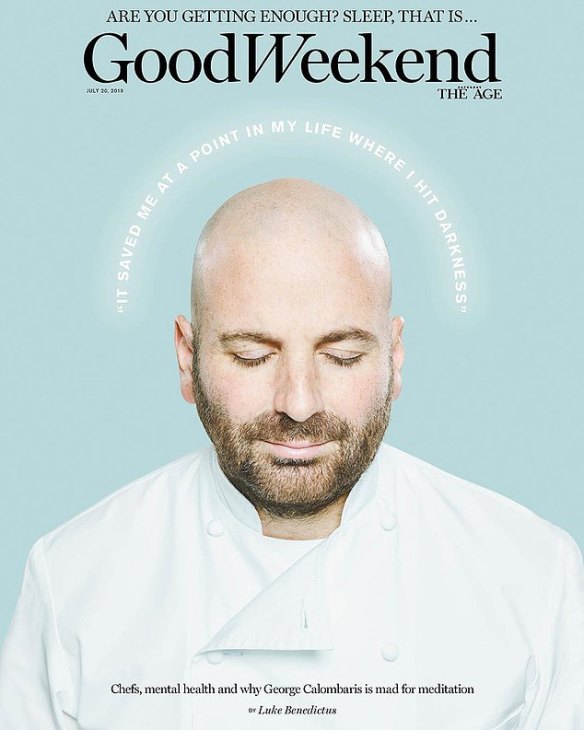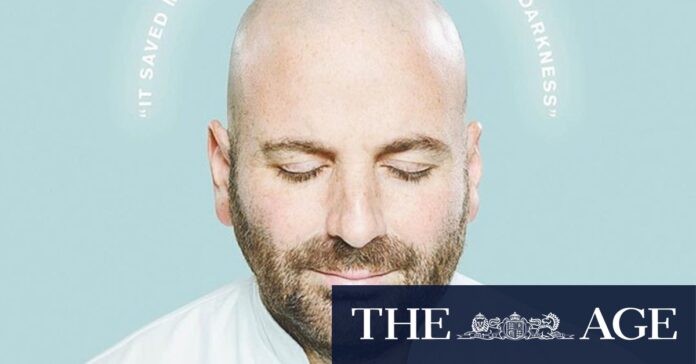[ad_1]
In magazines, there’s a blackout window that fills any editor with dread. It’s the period between sending the magazine to print, and it being published. At Good Weekend, the magazine inserted into The Sydney Morning Herald and The Age every Saturday, that window is eight days. We send to print on a Friday the magazine that will come out not the next day, but the Saturday after that.
So it was that in July 2019, we sent a magazine to print with a cover story that looked at mental health and chefs, following a spate of deaths and much talk about the pressure-cooker environment that is working in restaurant kitchens. There were numerous chefs and others quoted in the story, including a MasterChef host, one George Calombaris. Little did we know, journalists elsewhere in our newsrooms had been working for a long time on wage theft investigations in the country’s restaurant kitchens, including some owned by Calombaris.
We’d put Calombaris on the cover of the magazine because he was the most well-known of the chefs featured in our story. We’d put the headline around his bald pate as a design device – because he’d talked in the story about the value of meditation to his own mental health. He had his eyes closed, and looked a bit yogi. We dialled up the headline to drive home the yogi nature of the picture.

The Good Weekend cover that featured George Calombaris.Credit: The Age
If context is everything, our context exploded when, two days before we came out, more wage theft investigations hit the front pages of the SMH and The Age involving Calombaris. Thus, when we published two days later, our design device – a headline curving around a head – became, to many, a halo. We were slammed on social media for giving Calombaris a voice, a cover – for god’s sake, guys, a HALO. For our insensitivity to wage theft victims. For getting it so seriously WRONG. C’MON GUYS, WHAT WERE YOU THINKING?
I thought a lot about the workers struggling with their mental health who were not being paid proper wages, and what a slap in the face our cover must have felt to them. I learnt a few things that excruciating weekend, too.
Firstly, that nobody wants excuses or to hear how something happened or that something as lame as bad timing was involved. I learnt that social media trolls actually exist and when they pile on, an issue truly takes on a life of its own. I learnt that trying to explain a situation often makes matters worse, makes you sound defensive, aggressive, like you’re not accepting the valid criticism embedded within the wider furore. That readers will bring their own preconceptions to how they see a cover, and what you had in mind will be utterly beside the point.
Loading
I learnt, too, that small acts of kindness – like that of the well-known journalist from a rival newspaper, who sent a private Twitter message telling me not to worry, it will pass – are like life rafts. Naturally, they come from those who have endured a pile-on themselves. They get it.
None of this should be a problem for a journalist. We dish it out, we take it. We can’t and shouldn’t complain. But I’d be lying if I said it didn’t shake me. More importantly, though, it gave me a first-hand inkling of what it must be like to be shamed in and by the media, particularly in an age of social media amplification.
Magazine writers by their nature are more interested in shades of grey than black and white, and there are always judgment calls to make. What to include and what to leave out, how to square off the desire to hold people to account – a central tenet of journalism – with the need for fairness, and nuance. It’s always fraught, any story the result of hundreds of micro-decisions made by the writer, the editor, the sub-editors.
Similarly, every cover is an amalgam of decisions taken by photographers, designers and editors. Who will we use to illustrate this story? How will we get them to pose? Where will we shoot them? Which of the many and varied images we took of them best sum up the story? What words on top of that picture will make someone want to read the story within? How should they be placed for maximum impact?
As editor, I make the final call on all of this – and my call can be wrong either the moment I make it, or only with hindsight, because something changed. And the difference between the two will melt into oblivion once a cover is deemed bad.
Here’s the other thing. The dramas nearly always come from left field, rarely from the things you’ve fretted hours, days, weeks over. It drove home the need to think of every possible angle and ramification on any given story but by the same token, that we’re all only human, and that humans have to roll with the things that come their way, fair and unfair, nice and nasty, and learn from them. Try to be good, and impartial, and paint in the shades of grey so as to illuminate, not camouflage, a situation. And know that shit can and will happen.
Loading
I wonder today how young people, or those without a strong network of family and friends, or those who are written about day in, day out, withstand social media pile-ons. How anyone with mental health issues doesn’t just lose it. How it could actually cause bad mental health.
The next time we considered putting a headline around a person’s head – and believe it or not, it did come up again – my creative director and I laughed ruefully. Yeah, nah.
Start the day with a summary of the day’s most important and interesting stories, analysis and insights. Sign up for our Morning Edition newsletter.
[ad_2]
Source link


